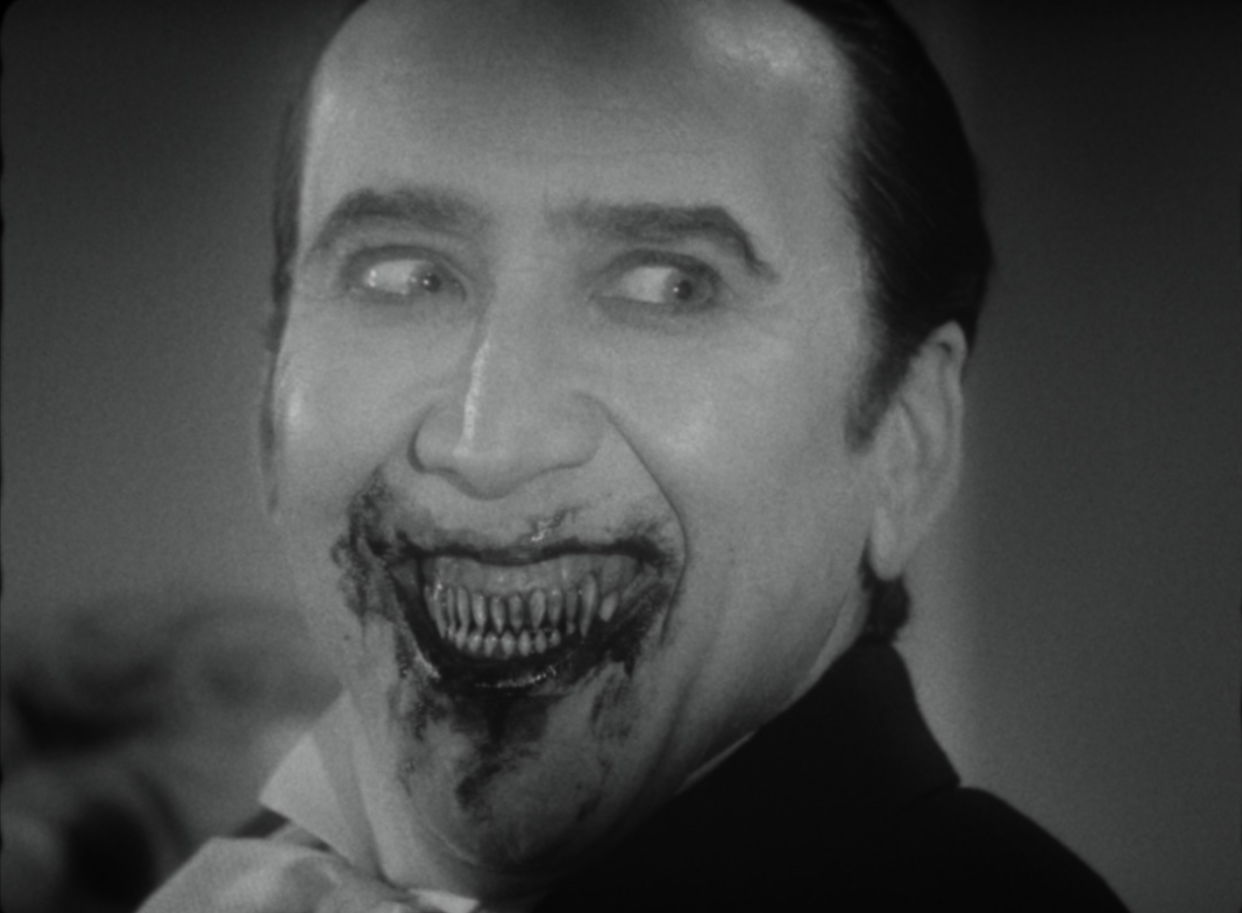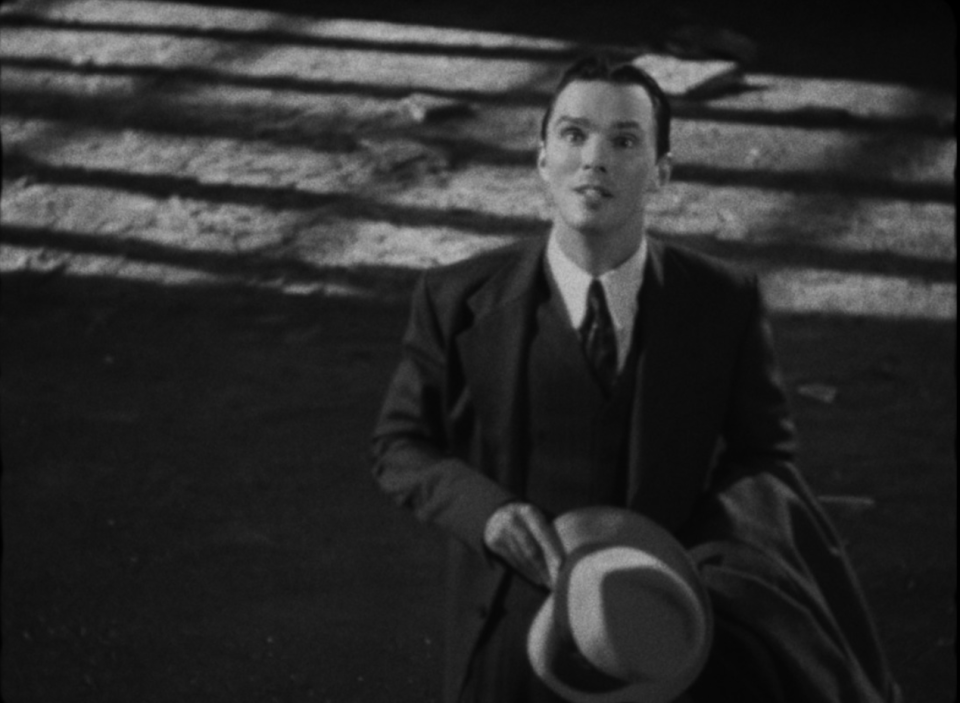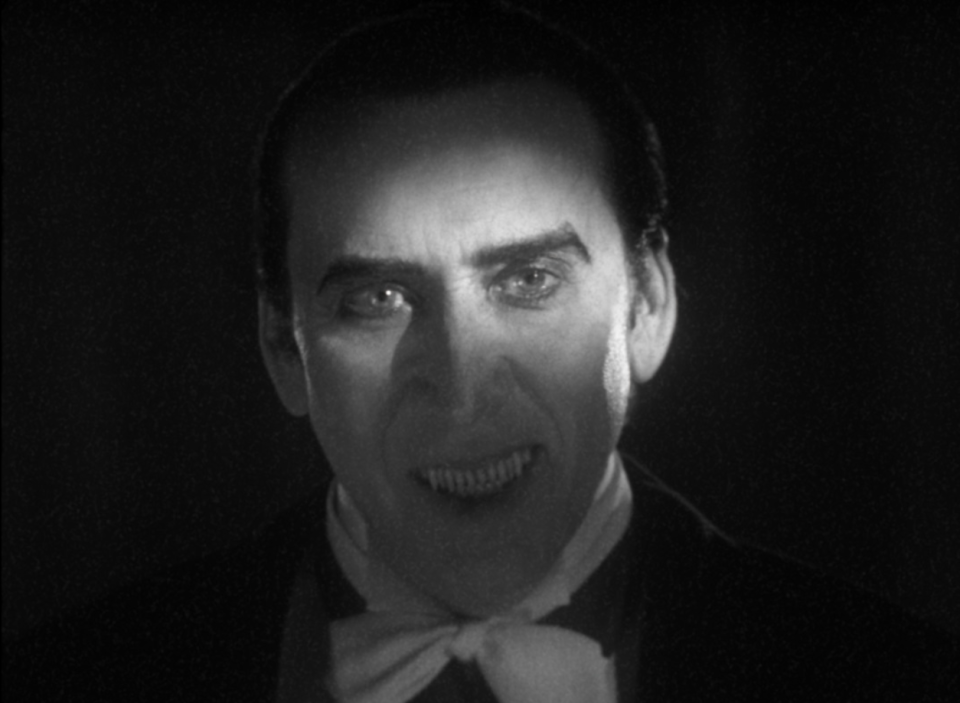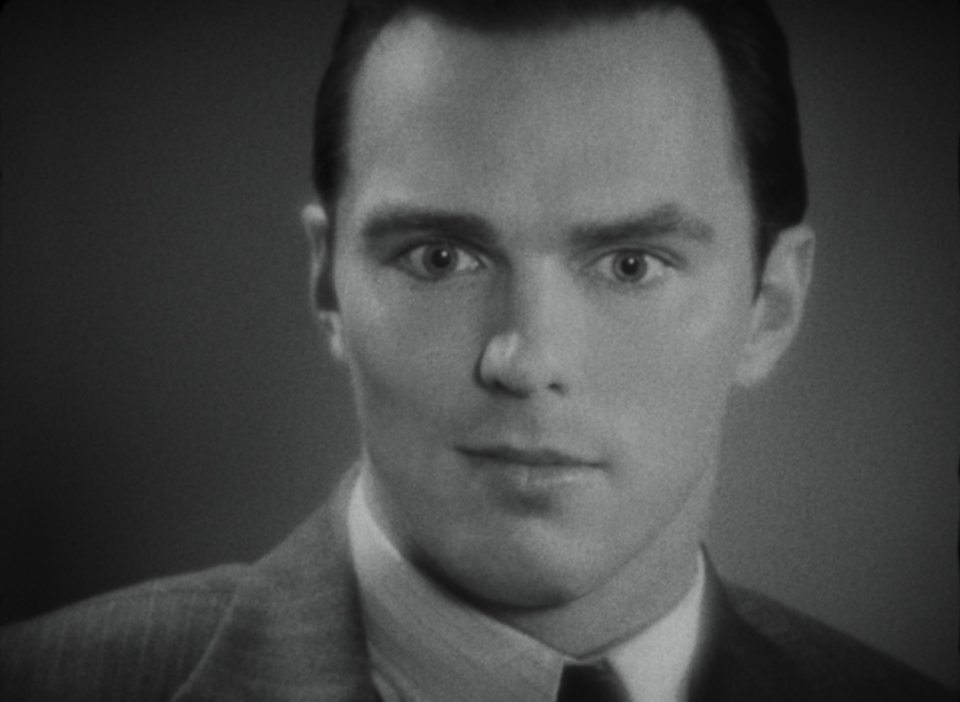Inside the Painstaking Recreation of ‘Dracula’ for the Black-and-White ‘Renfield’ Prologue

- Oops!Something went wrong.Please try again later.
In “Renfield,” the title character, played by Nicholas Hoult, is desperate to end his centuries’ long codependent relationship with his master, the legendary vampire Count Dracula (Nicolas Cage). Director Chris McKay and writers Robert Kirkman and Ryan Ridley knew they needed to quickly establish the long history of Renfield and Dracula from the outset, and their method to do so led to one of the most delightfully entertaining and technically impressive openings in horror movie history — and they reached back into horror movie history to achieve it.
The prologue that begins “Renfield” takes us through the film’s core relationship by placing the actors in scenes from Tod Browning’s 1931 “Dracula,” the first of the classic Universal monster movies that inspired and influenced McKay. (“Renfield,” also from Universal, is a direct descendant and “quasi-sequel,” according to the director.)
More from IndieWire
How 'Polite Society' Created an Exhilarating Blend of Action from 'The Matrix,' Eunice Huthart, More
The montage of classic moments in which Cage and Hoult take the place of Bela Lugosi and Dwight Frye is both an affectionate tribute and an effective means of exposition, which is exactly what McKay intended. “I wanted it to be a loving homage for fans, but also something that works as world-building for these characters if you don’t know or don’t care about the old movies,” the director told IndieWire.
Initially, McKay wanted to tell Renfield and Dracula’s story by incorporating Cage and Hoult into scenes from a wide variety of “Dracula” movies, from the Browning original and the Hammer classics of the 1950s and 1960s to the 1979 Frank Langella incarnation and Francis Coppola‘s lushly romantic 1992 interpretation.
When budget and rights issues prohibited that approach, McKay restricted himself to the 1931 “Dracula,” with a few shots from other iconic Universal releases like “Frankenstein” thrown in where helpful to the storytelling. Even so, the director found that Universal executives weren’t crazy about his idea to begin a modern horror comedy in an anachronistic black-and-white style. “The studio was a little reticent,” he said, noting that they only wanted to give him a half-day to shoot it.
That meant McKay and his key collaborator on the prologue, second unit director and visual effects supervisor James E. Price, had to squeeze out whatever time they could on set to pull off their extremely ambitious set piece. Luckily, the nature of McKay’s concept meant they could pull Cage and Hoult away in between other scenes and quickly knock off shots for the prologue.
“Our production offices were in a compound where they used to shoot ‘NCIS: New Orleans,’ and it was very easy to throw a green screen up between the sets,” McKay said. “We could just go to that and chip away at getting the scene done whenever we had a moment to shoot, because all we were doing was compositing the actors into the old backgrounds — we’re just erasing Bela Lugosi and Dwight Frye and putting Cage and Hoult in.”

Universal
As simple as the idea sounds in theory, it created multiple challenges for Price and other members of McKay’s team, who had to match the camera positions, lighting, and lenses of the original footage. “I searched high and low to find out as much as I could about what kinds of lenses and film stocks they used back then,” Price told IndieWire. “There’s not a lot of information available, but we were able to estimate knowing the heights of the actors and the approximate size of props and furniture in the room. From that, we could reverse engineer what the focal length of the shot might have been.” Price took each of the images from the original Universal films he and McKay had selected and imported them into a computer to track the shots and generate camera data.
While most of the prologue consisted of shots from the 1931 “Dracula” in which the only new elements were the actors, a handful of elements had to be recreated on set, such as an opera box that production designer Alec Hammond built to match the textures of Browning’s movie. “We took the angle of the opera box from the original film, built a model of it in the computer and tried to get as close as we could to the original lens and angle,” Hammond told IndieWire. “Then we put the model on our stage, got the camera back as far as we could get it to get the shot, and lined up what we were building to the distortion of the lens — we kind of did practically what visual effects does fairly often when they’re building 3D models in the computer.”
The scene was shot in color to give the filmmakers greater flexibility by weighting certain red, green, and blue channels heavier than others in the black-and-white conversion, creating additional challenges for Hammond. “We had things that existed in color in the real world but needed to be aware of what they looked like in black-and-white,” he said. “We created samples for wood grain and wall color and fabric and chairs as well as the drapes that hung behind them in the opera box and just built it all to match.”

Universal
Beyond the opera box scene, Hammond and the art department provided props for Cage and Hoult for any scenes in which they needed to be holding or touching things; these items were then replaced with the 1930s originals in post. “If Renfield was sitting at a desk, we had him sit at a prop desk even though we were never going to see that in the final product,” Price said. “It helped us line up our shots and gave the actors something to work against. So before we shot, we took all of our data and all the backgrounds and went to the green screen stage and set everything up ahead of time. We marked all the camera positions, we marked where all the actors would go, we marked where all the props were. Then when it came time to shoot, it was just a matter of going down the list: OK, the camera goes over here, the actor goes here, the light goes here. By prepping all of that ahead of time, we made it really efficient.”
Universal created a new 4K master of the 1931 “Dracula” shortly before “Renfield” went into production, but even with this crisp source material, Price and McKay found inconsistencies they had to consider. “Given the nature of film production at the time, the contrast and grain were different in every shot,” Price said. “The amount of softness or sharpness changed from shot to shot, so we had a question to answer: Do we match every shot faithfully or to try to make it feel like more of a whole? In the end, we did a little bit of both; if it was a run of shots that were meant to be together, we made the grain and contrast consistent, if they were different scenes, we just let them be.”

Universal
Ultimately, McKay said the filmmakers “de-noised” the original footage and took out the grain so that colorist Dave Cole could add his own grain in post, but the mandate was always to be as faithful to the look of the source material as possible. “The old look is more silvery and unique, and the backgrounds go out of focus really fast with the old lenses and the way the film stocks worked,” McKay said. “I wanted to try to match that as much as possible.” The sharpness of modern cameras and lenses created challenges not only in terms of depth of field but other departments, like hair and make-up. “Lenses today capture so much extra detail,” Price said. “We did a lot of experiments backing off on the detail level to make sure the images matched a traditional Hollywood movie of that era.”
The final touch in recreating the classic look came in the form of costumes taken from the Universal archives — often Cage and Hoult are wearing clothes from the era. When they’re not, they’re wearing fabrics that wardrobe costume designer Lisa Lovaas specifically chose to integrate with the old pieces seamlessly. According to McKay, it was this attention to detail that made the prologue special. “Again, this was something we had to shoot on the side,” he said. “But people rallied and wanted to make it happen because they had such a love for these movies and knew it was important to the characters. I feel really lucky.”
“Renfield” is in theaters now.
Best of IndieWire
Every Palme d'Or Winner from the Cannes Film Festival, Ranked
Martin Scorsese's Favorite Movies: 60 Films the Director Wants You to See
Sign up for Indiewire's Newsletter. For the latest news, follow us on Facebook, Twitter, and Instagram.

